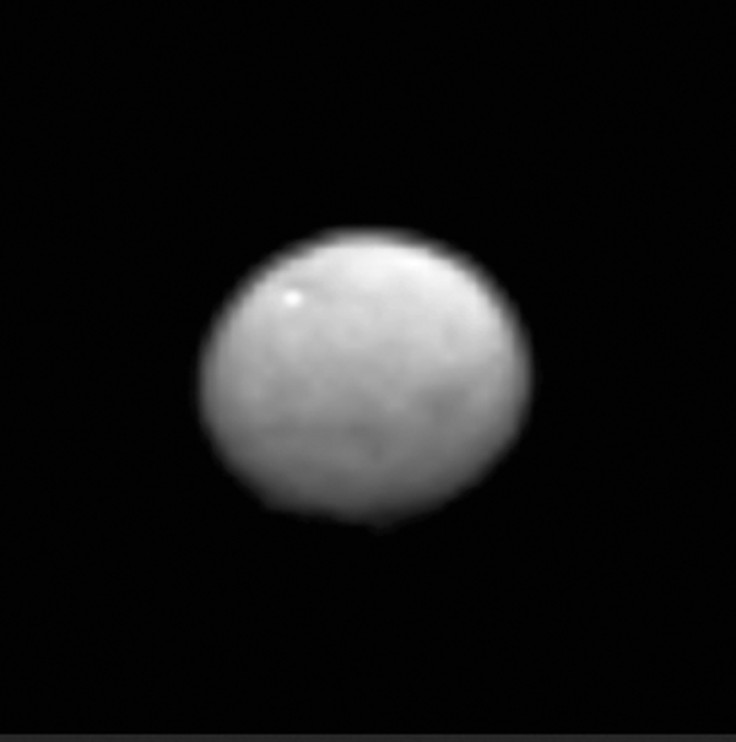Nasa's Dawn spacecraft sends images of dwarf planet Ceres with crater-like structures

The latest images of dwarf planet Ceres taken from Nasa's Dawn spacecraft have improved in resolution since last month and hint at surface structures like craters on the protoplanet.
The series of images are being taken for navigation purposes as Dawn speeds at around 725 kph for its scheduled capture into the Ceres orbit on 6 March.
Ceres is the largest object in the asteroid belt between the Mars and Jupiter orbits. It has an average diameter of 590 miles (950 km), and is thought to contain a large amount of ice. Some scientists suspect the surface conceals an ocean.
Since launching in 2007, Dawn has already visited Vesta, another giant object currently located 104 million miles (168 million km) away from Ceres.
The spacecraft delivered more than 30,000 images in a year in orbit and provided insight about Vesta, the second most massive body in the asteroid belt with an average diameter of 326 miles (525 km).
Thanks to an ion propulsion system, Dawn is the first spacecraft ever targeted to orbit two deep-space destinations. It has completed five years of accumulated thrust time, far more than any other spacecraft.
In an ion propulsion engine, an electrical charge is applied to xenon gas, and charged metal grids accelerate the xenon particles out of the thrusters and provide the propulsion.
Ceres is the largest object in the asteroid belt between Mars and Jupiter orbits. It has an average diameter of 590 miles (950 kilometers), and is thought to contain a large amount of ice. Some scientists suspect the surface conceals an ocean.
The distance between Vesta and Ceres is greater than the distance between the Earth and the sun.
Dawn is currently less than 400,000 miles (640,000 km) from Ceres.
"Ceres is almost a complete mystery to us," said Christopher Russell, principal investigator for the Dawn mission, based at the University of California, Los Angeles. "Ceres, unlike Vesta, has no meteorites linked to it to help reveal its secrets. All we can predict with confidence is that we will be surprised."
The best images of Ceres so far were taken by Nasa's Hubble Space Telescope in 2003 and 2004. The latest images from Dawn, taken on 13 January are not sharp at about 80% of Hubble resolution, but by the end of the month the images will improve, says Nasa.
Ceres and Vesta are thought to be different in a few important ways. Ceres may have formed later than Vesta and with a cooler interior.
The older date implies the presence of radioactive material on Vesta that heated the body and vaporised the water.
Ceres, in contrast, has a thick ice mantle and may even have an ocean beneath its icy crust.
© Copyright IBTimes 2024. All rights reserved.





